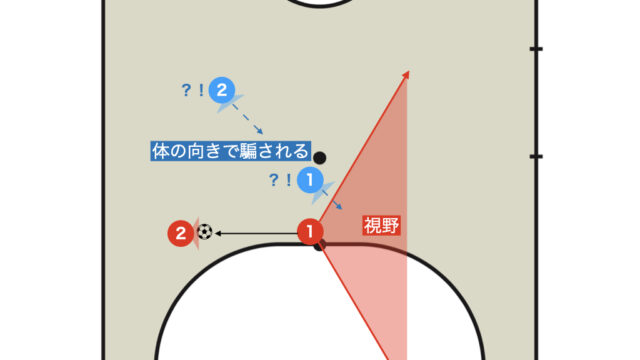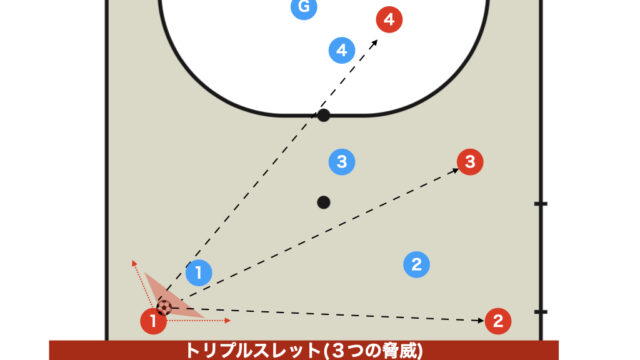When receiving a pass in futsal, how should you trap the ball and carry it?
Unfortunately, many players unintentionally engage in Central dribble, or repeatedly lose the ball due to intense defensive pressure.
When receiving the ball in futsal, which play should you choose? Furthermore, what exactly are the essential plays in futsal, namely “Ball Attack/Central Dribble” and “Tonpa (Contrapie)?”
In this article,
- Explanation of Ball Attack/Central Dribble
- Explanation of Tonpa (Contrapie)
- How to differentiate between Ball Attack/Central Dribble and Tonpa
- Practice drills related to Ball Attack/Central Dribble and Tonpa
these four points are covered.
I hope you read until the end.
Since futsal is played on a small court, when facing intense pressure from opponents it is important not to trap the ball by simply keeping it at your feet, but rather to move it with your first touch. Directing the ball with your first touch is called Control Oriented.
What is Ball Attack/Central Dribble?
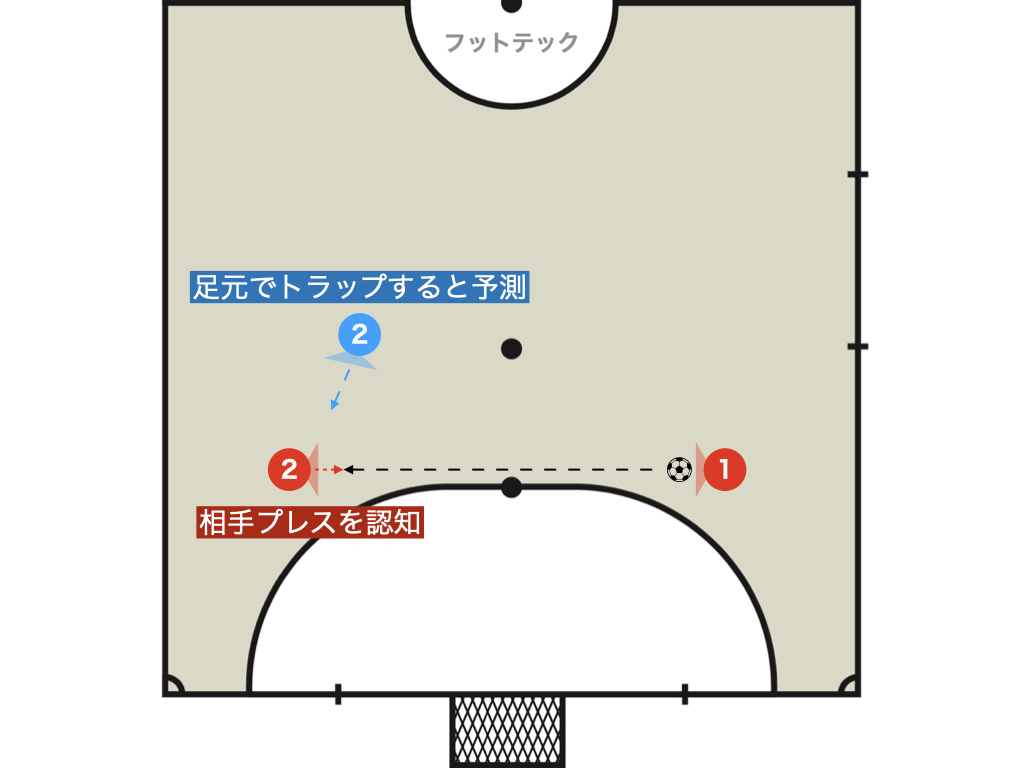
In futsal, a Ball Attack involves moving to receive a passed ball and receiving it in a position different from where you originally were.
Furthermore, moving the ball toward the inside of the court is called a Central dribble.
In addition to moving to receive the ball with a Ball Attack, executing a Central dribble with the first touch helps to avoid intense defensive pressure.
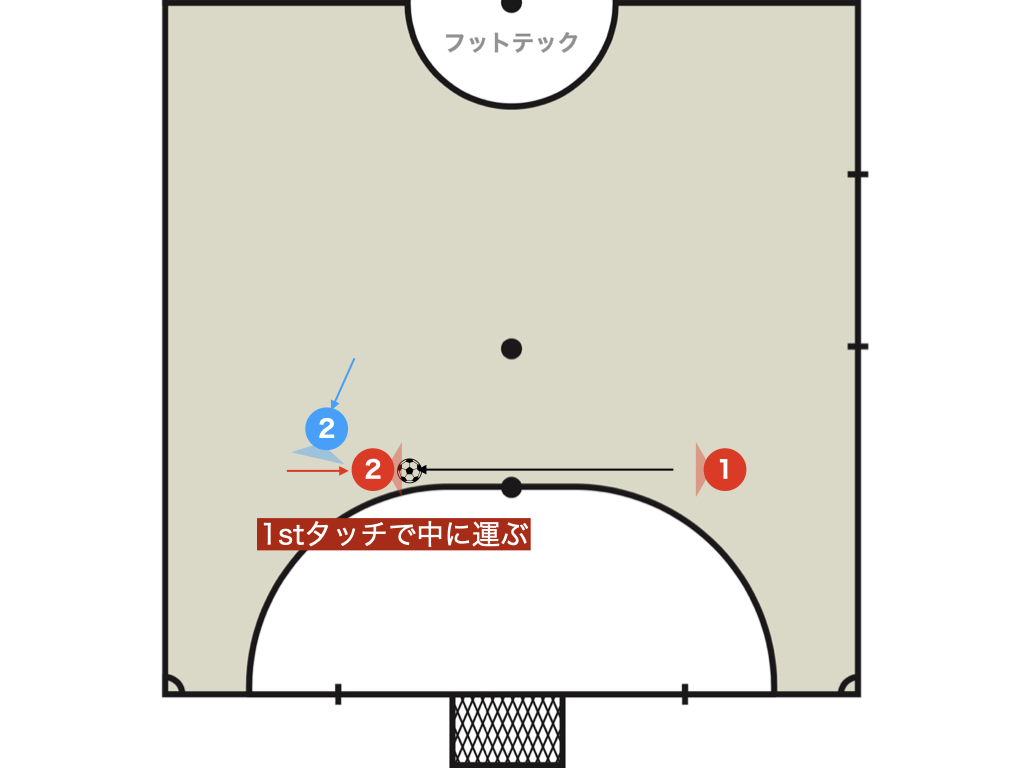
When defensive pressure is high, trapping the ball at your feet exposes it to the opposing defenders, significantly increasing the likelihood of losing possession.
However, by utilizing a Ball Attack you can receive the ball in a position different from what the opponent anticipates. As shown in the figure above, this immediately helps to evade the opponent’s press.
Additionally, if you opt for a Central dribble with your first touch after a Ball Attack, the ball is moved to a position out of the opponent’s reach, reducing the risk of losing it.
A Ball Attack, which involves moving to receive a pass in a different location to unmark the opposing defender, is also known as Atacahl Elbaron.
If you can shake off your marker with a Ball Attack and Central dribble, you can create a localized numerical advantage. From there, passing to the opposite-side ala and breaking the defense with Paralela can be an effective attack.
What is Tonpa (Contrapie)?
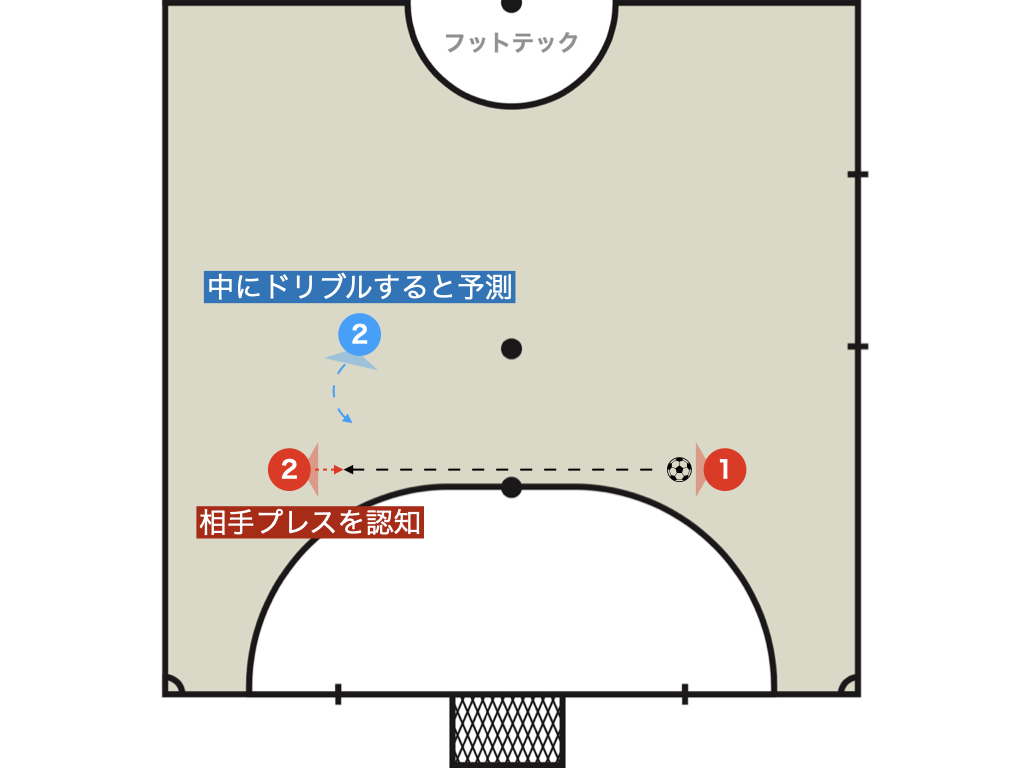
If you repeat Ball Attacks, there is a possibility that the opposing defenders will anticipate and mark you.
Since Tonpa (Contrapie) moves in the opposite direction to Ball Attack/Central dribble, it is an effective play against opponents who have anticipated a Ball Attack/Central dribble.
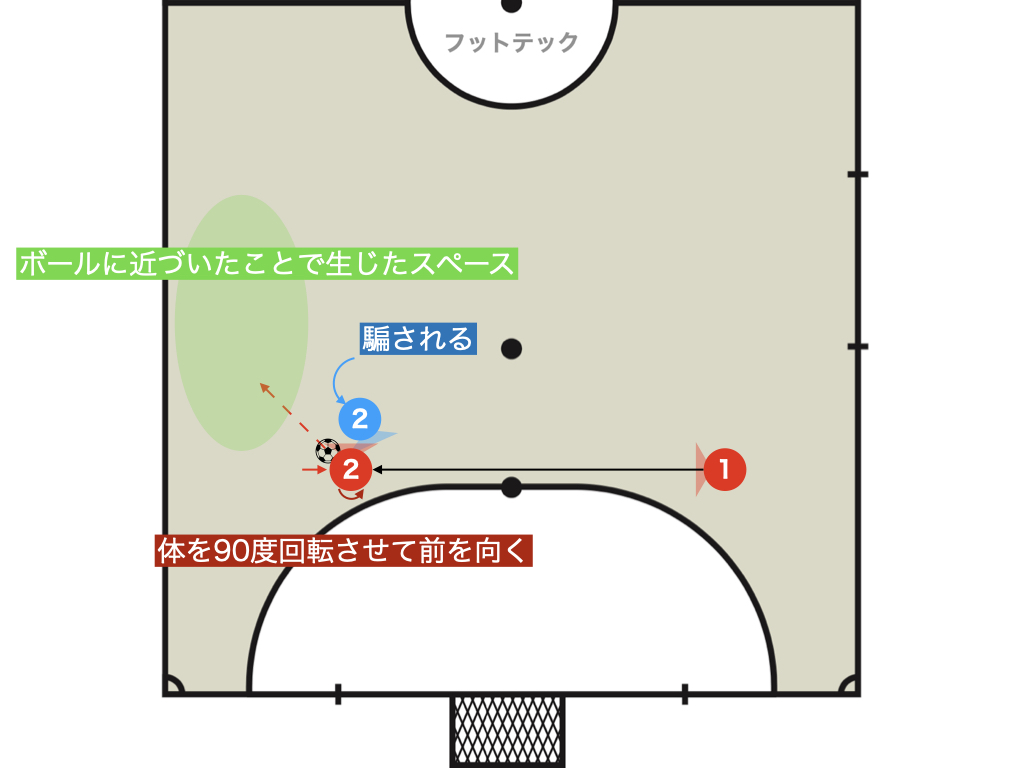
Contrapie is a Spanish term meaning “to catch the opponent off guard,” and it is also called Tonpa because you trap the ball with the sole (“Ton”) and then plant your foot with a “Pa.”
The basic method of performing Tonpa (Contrapie) in futsal consists of five steps.
- Move to receive the passed ball, just like in a Ball Attack.
- Observe the movement of the opposing defenders and decide that Tonpa (Contrapie) is more effective than a Ball Attack/Central dribble.
- Use the sole of the foot that is closer to the passed ball (if the pass comes from the right, use the right foot) to stop the ball in place.
- At the moment of the trap, turn your body forward and prepare to move in the opposite direction.
- Use the foot with which you trapped the ball to carry it in the opposite direction.
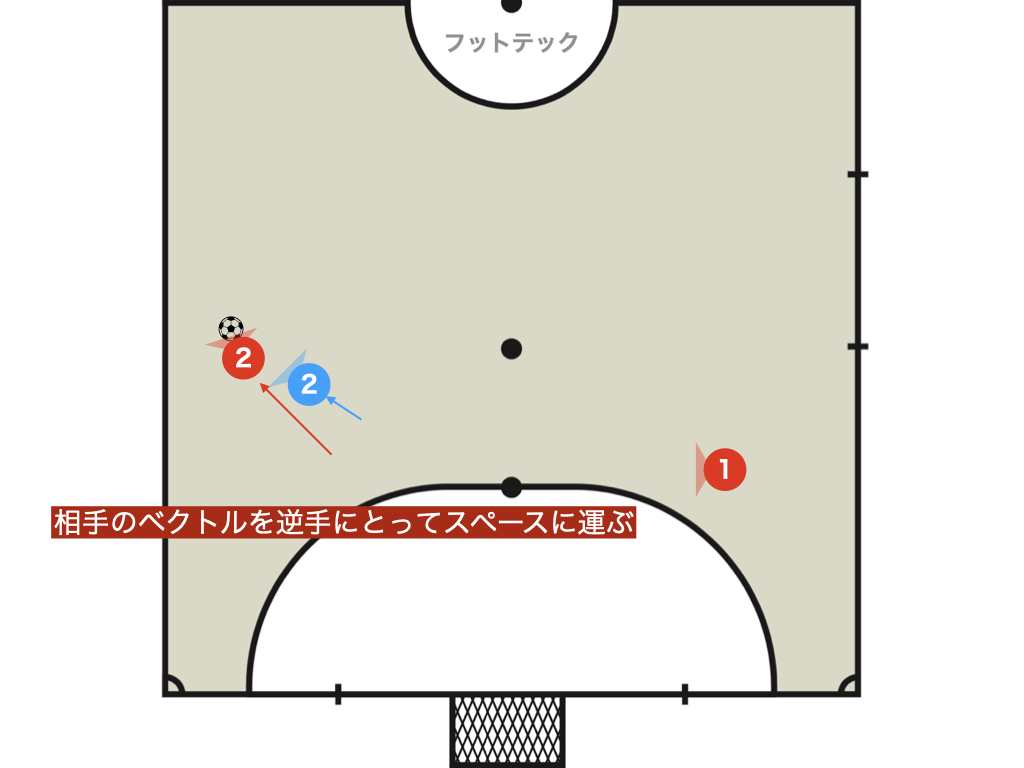
Because a Ball Attack creates space on the side, you can move the ball forward.
However, if you receive the ball near the touchline without executing a Ball Attack, the limited space on the side makes performing Tonpa (Contrapie) more difficult.
Dominant Foot Side Tonpa
There are some slightly irregular variations of Tonpa (Contrapie) in futsal.
One such variation is the reverse-side Tonpa.
The basic Tonpa (Contrapie) is performed by trapping the ball with the foot that is closer to the passed ball.
Therefore, on the dominant foot side you may need to trap with the non-dominant foot; when you trap with your dominant foot on that side, it is called reverse-side Tonpa.
Double Touch Tonpa
Among the variations of Tonpa (Contrapie) in futsal, the one that utilizes a double touch is called Double Touch Tonpa.
In particular, when the opponent’s pressure is intense and the ball is likely to be touched, performing a double touch is effective.
Executing the double touch with a slight negative inclination makes it even more difficult for the opponent to reach the ball, reducing the chance of losing it.
Behind-the-back Trap Tonpa
Although slightly more difficult, there is also a Tonpa (Contrapie) in futsal that uses a behind-the-back trap (heel).
Even in this case, it is important to feint with a Ball Attack/Central dribble, then position your body in front of the defender and trap the ball with a heel.
Differentiating Between Tonpa (Contrapie) and Ball Attack/Central Dribble
How should you differentiate between Tonpa (Contrapie) and a Ball Attack?
Since Tonpa is essentially an extension of Ball Attack/Central dribble, they should not be completely separated.
In other words, it is desirable that the motions for Ball Attack/Central dribble and Tonpa remain virtually identical up until the moment of the trap.
A common mistake is when the desire to perform Tonpa (Contrapie) causes players to neglect moving to receive the ball, instead forcefully attempting to break through vertically.
Preparing for a Tonpa can leave you vulnerable to being marked by your opponent.
Imagine Tonpa as an extension of the Ball Attack; first, move to receive the ball, then closely observe the vector of the opposing defenders to decide whether to dribble inside or execute a Tonpa. This is crucial.
Practice

- Create a box like the one shown above using flat markers
- Engage in 1vs1 within the box (defenders cannot exit the box)
- Position the defenders at the diagonal flat markers
- Start when the ball is played from the center circle
- Defenders should focus on the intensity of the first defender’s press (go all out to win the ball)
- Attackers should focus on the first touch (Ball Attack or Tonpa)
- After attacking, switch to defense
Summary
This time, we have explained the important individual tactics in futsal, namely Ball Attack/Central dribble and Tonpa (Contrapie).
The key points of this article are summarized as follows:
- Ball Attack/Central dribble is effective when the opponent’s press is intense.
- Tonpa (Contrapie) is a play that takes advantage of opponents anticipating a Ball Attack/Central dribble.
To be able to use Ball Attack/Central dribble and Tonpa (Contrapie) effectively during a match, it is important to practice assuming that the opposing defenders are positioned in front during a one-touch pass.
Since Tonpa is a challenging play to master if you are not accustomed to it, it is recommended to practice it in a low-pressure environment first.
Thank you very much for reading this article to the end.
If you found this article useful, please consider sharing it using the social media share buttons above.
We regularly share valuable insights on futsal tactics on Twitter, so if you haven’t followed us yet, we’d appreciate your support!
We are committed to raising the level of futsal in Japan by sharing high-quality information through discussions with individuals who have coaching experience in the F.League and overseas.
If you have any questions or notice any mistakes, feel free to leave a comment below.
We update our articles regularly, so if you’d like to keep reading, please bookmark our site or search for “FutTech”!
